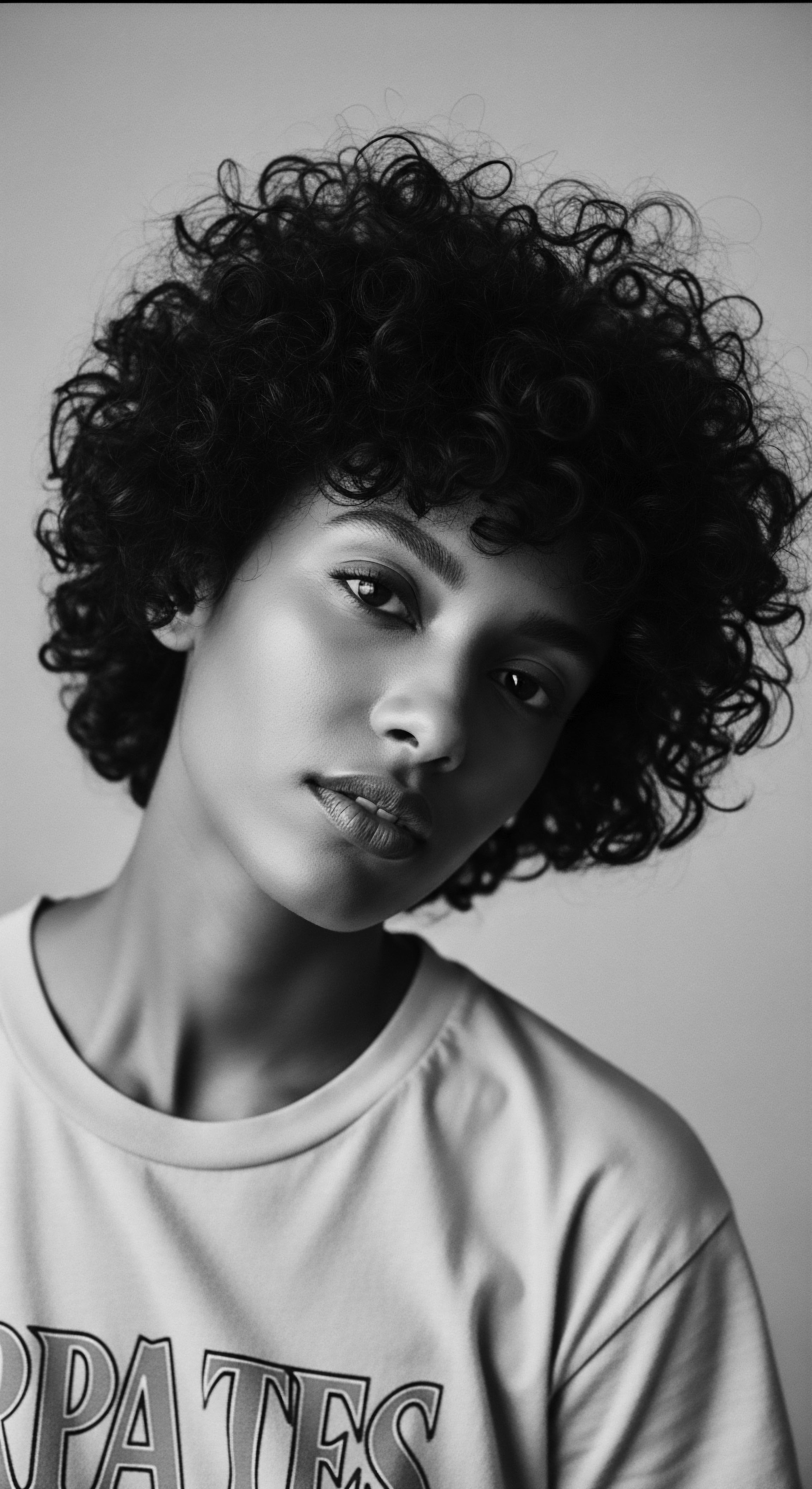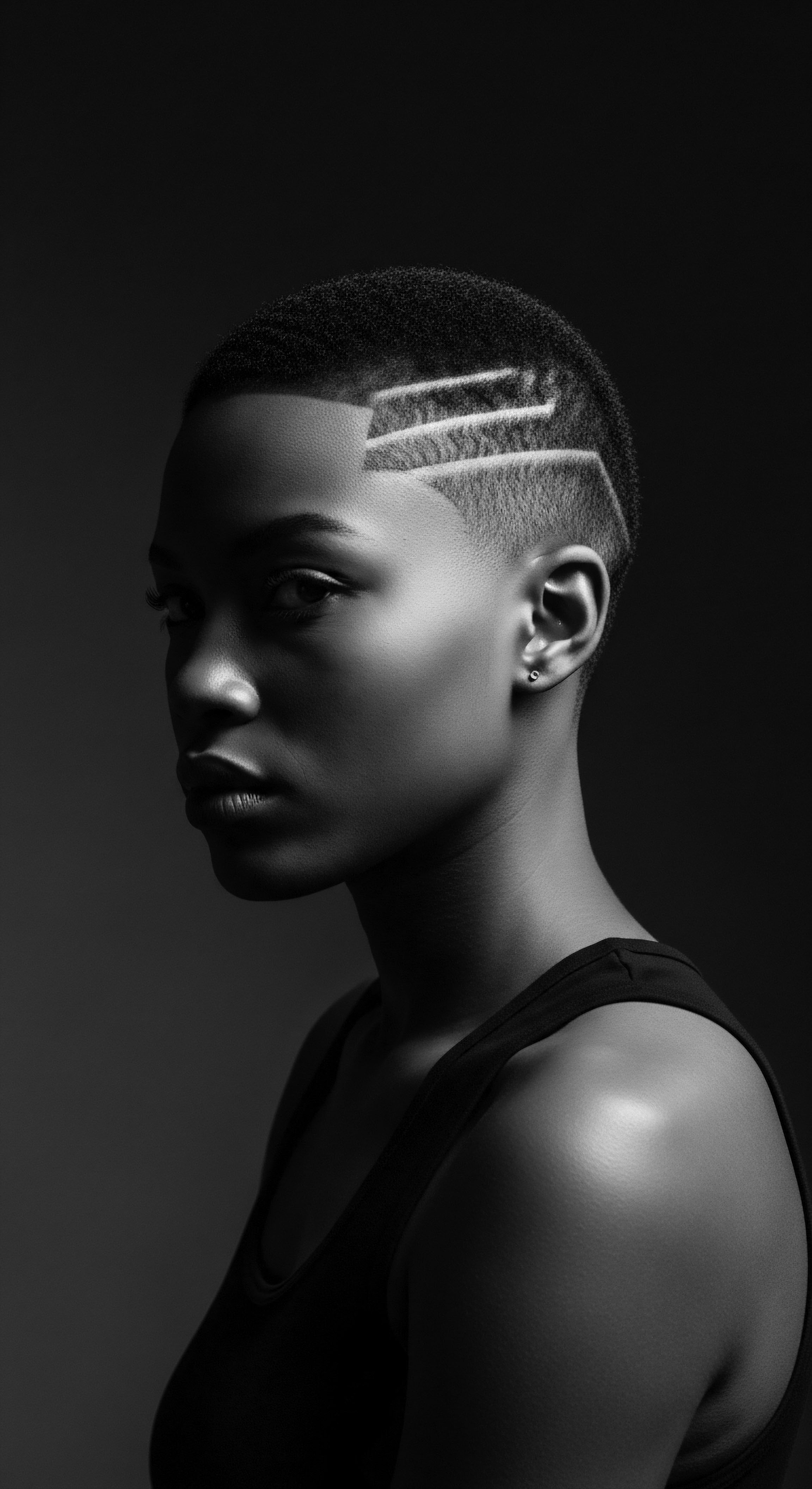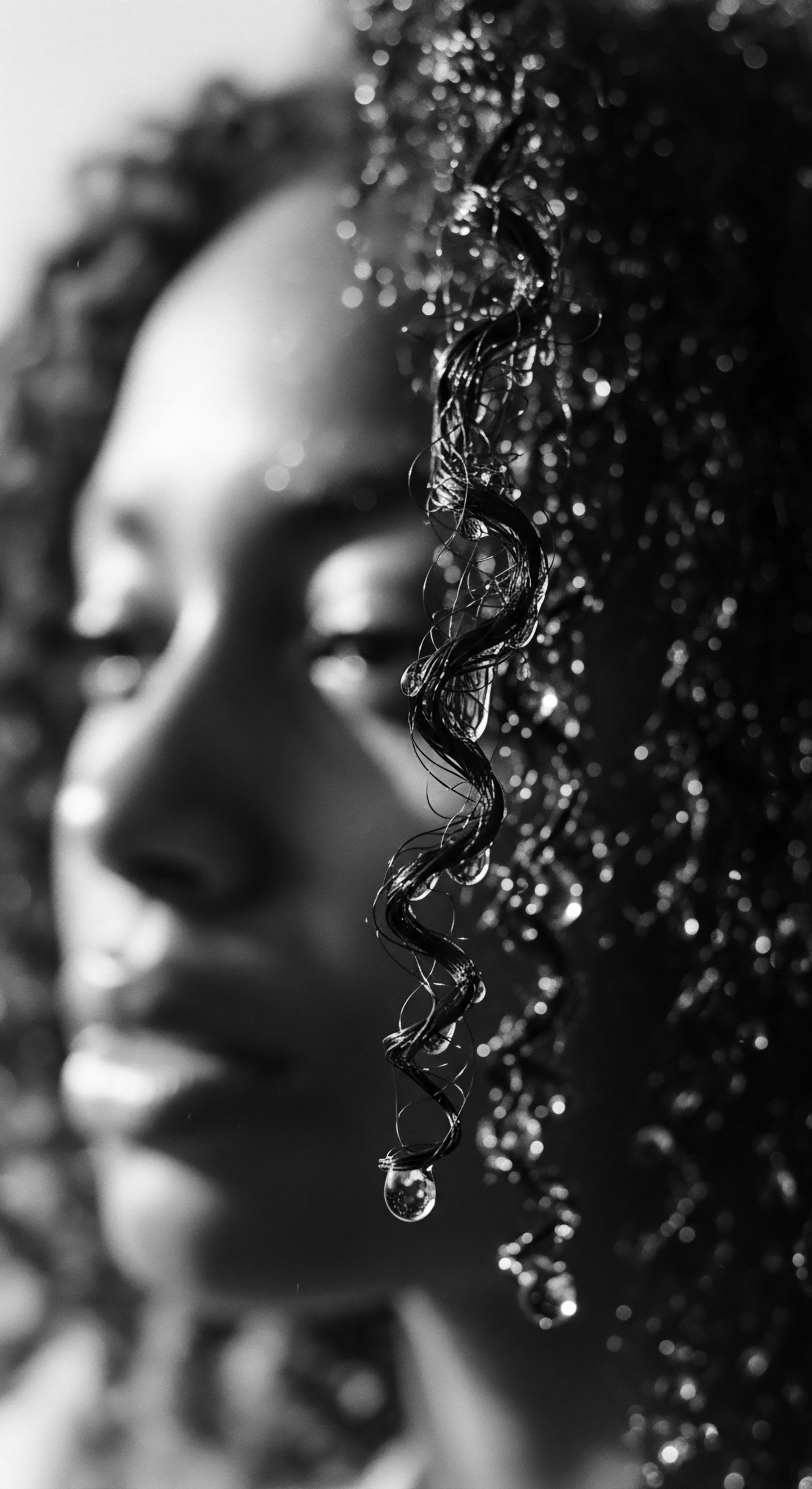The journey of textured hair care, from ancient practices to our present-day regimens, is a profound narrative—a testament to human ingenuity, cultural resilience, and an unbroken connection to ancestral wisdom. We do not merely tend to strands; we engage in a living archive, a dialogue across generations that continues to shape identity and well-being. For those of us with hair that coils, kinks, and curls, this engagement is particularly resonant, echoing the rhythms of deep cultural heritage.

Roots
The very structure of textured hair, so often perceived as a modern enigma, holds within its helix the echoes of ancient climates and survival. This complex architecture, with its distinctive elliptical cross-section and retro-curvature at the hair bulb, is not a design flaw but rather an evolutionary marvel. Scientific inquiry now confirms what ancestral observation understood implicitly ❉ highly curved hair, such as Afro-textured hair, served as an adaptive mechanism. It provided insulation, safeguarding the scalp from the sun’s intense ultraviolet radiation, all while allowing for air circulation, which helps cool the scalp in hot environments.

How does the Biology of Textured Hair Honor Its Ancient Lineage?
Modern trichology, through detailed microscopic examination, now explains the reasons behind the unique properties of highly coiled strands. Afro-textured hair fibers, for instance, are often flatter in cross-section than straighter hair types, and their wider axis twists along the length, contributing to tighter curls. This intricate construction, also characterized by a higher density of disulfide bonds, contributes to its specific texture and appearance. However, these very characteristics also create areas of weakness, making it more prone to breakage and dryness compared to other hair types.
Ancestral communities, without the aid of electron microscopes, possessed an intimate, lived understanding of these hair characteristics. Their practices, honed over millennia, implicitly recognized the need for moisture retention and gentle handling. They devised care rituals and styling methods that worked in concert with the hair’s natural tendencies, rather than against them. This deep, intuitive knowledge formed the bedrock of their hair care codex, passed down through generations, long before modern science articulated the “why.”

What Traditional Terms Described Diverse Hair Types?
The classifications of textured hair in ancient societies were not based on a numerical system like the Andre Walker types we see today. Instead, they were deeply entwined with social context, spiritual significance, and even the natural world. Hairstyles and their underlying hair types were identifiers of status, age, marital status, ethnic identity, religion, wealth, and rank within society. In pre-colonial Africa, hair was a form of communication.
Different communities held their own lexicons, rich with descriptive terms that honored the diverse manifestations of hair. For example, in many West African cultures, the nuances of curl patterns were often described through analogies to specific plants, animals, or natural phenomena, reflecting a holistic worldview where humans were intrinsically linked to their environment. These terms celebrated the varied forms of textured hair, recognizing each as a unique expression of identity and heritage.
The hair of ancient communities was a public, biological canvas, meticulously shaped to signify identity and social standing.
The Himba people of Namibia, for instance, developed distinct ways of preparing and styling hair that signaled age and life stage. Young Himba girls might wear specific braided styles before puberty, while married women adopted different, often elaborate, coiled creations infused with a mixture of ground ochre, goat hair, and butter. This rich vocabulary of visual cues spoke volumes, creating a complex communication system etched directly onto the scalp. Such systems contrast sharply with later colonial descriptors, which often reduced textured hair to derogatory terms like “woolly” or “peppercorn,” reflecting a deliberate act of dehumanization.
| Ancestral Understanding Hair as a spiritual antenna connecting to ancestors and higher realms. This sacred view often led to gentle, reverent practices. |
| Modern Scientific Parallel The scalp, rich with nerve endings and blood vessels, is a complex biological system, influencing overall well-being. Modern scalp care acknowledges its role in hair health. |
| Ancestral Understanding Recognition of hair's natural tendency toward dryness and breakage. This informed the frequent use of protective styles and moisturizing ingredients. |
| Modern Scientific Parallel Afro-textured hair’s elliptical cross-section and coil pattern lead to uneven sebum distribution and increased susceptibility to breakage, necessitating specialized moisture retention strategies. |
| Ancestral Understanding Styling as a social ritual and community bonding experience. This practice transmitted knowledge and reinforced communal ties. |
| Modern Scientific Parallel The psychological benefits of hair care as self-care and community connection are recognized, contributing to mental well-being and identity affirmation. |
| Ancestral Understanding The wisdom embedded in ancestral hair care practices frequently finds validation in contemporary scientific findings, underscoring a timeless connection to heritage. |

Ritual
Hair care rituals of old were not fleeting acts of vanity; they were profound engagements with self and community, acts of spiritual connection, and statements of social position. These traditions, passed down with meticulous care, represent a living legacy—a rich heritage that continues to shape how we approach textured hair styling today. From the very tools used to the techniques employed, modern methods bear the indelible mark of ancestral practices.

How Have Traditional Styling Tools Influenced Contemporary Implements?
The ubiquitous afro pick, a symbol of pride and resistance, carries a history spanning over 5,500 years. Archaeological finds from Kush and Kemet—ancient Sudan and Egypt—reveal intricately carved combs of wood, bone, and ivory buried with their owners. This suggests that hair tools were not mere grooming items but sacred objects, infused with cultural, spiritual, and artistic meaning. These combs, sometimes engraved with symbols denoting tribal identity, rank, or protection, were central to styling rituals that communicated age, marital status, and clan.
Today’s wide-tooth combs and detangling brushes echo the broad-toothed structure of these ancient picks, designed to navigate the natural coil without causing undue stress. The evolution of these tools reflects a continuous pursuit of effective ways to manage and sculpt textured hair, from the earliest human hands to the precision-engineered instruments of modern design.
- Duafe Combs ❉ Traditional Akan combs, often gifted to women to commemorate significant life events such as puberty, weddings, or births, were not just functional. They were works of art, some crowned with female busts echoing fertility figures, signifying beauty and the desire for progeny.
- Styling with Fingers ❉ Many individuals with natural hair still rely on their fingers to detangle, a practice with roots in ancient times, demonstrating how deeply ancestral methods are integrated into modern routines.
- Natural Fibers and Animal Products ❉ Before synthetic materials, hair extensions were crafted from human hair, wool, or plant fibers, mirroring the ancestral use of sinew and goat hair.

What Ancestral Roots Ground Protective Styling?
Protective styles, a cornerstone of modern textured hair care, possess a deep and layered history within African and diasporic communities. Styles like braids, twists, and Bantu knots were not simply aesthetic choices in ancient Africa; they served practical, social, and even spiritual purposes. They protected hair from environmental elements, particularly in demanding climates, minimized manipulation, and aided in length retention.
Protective styling, beyond its aesthetic appeal, functions as a tangible connection to the ingenuity and resilience of ancestral hair practices.
During periods of immense oppression, particularly the transatlantic slave trade, these styles became acts of profound resistance and cultural preservation. Enslaved Africans, stripped of many aspects of their identity, found ways to maintain their heritage through hair. Cornrows, in particular, served as covert maps for escape routes or even concealed seeds for survival, transforming hair into a vehicle for freedom and continuity.
The Bantu knots, known for their distinctive coiled buns, originated from the Zulu (Nguni) tribes of Southern Africa, carrying meanings related to tribal identity and social standing. These are not mere styles; they are living testaments to enduring heritage.
The practice of adorning hair with beads, cowrie shells, and other natural embellishments, seen in various African traditions like those of the Fulani people, also finds its echo in contemporary styling. These elements were not only decorative but often held symbolic meanings of wealth, status, or spiritual connection, a legacy that continues to resonate in modern adornment.

How does Modern Heat Styling Compare to Historical Hair Manipulation?
The pursuit of altered hair textures, including straightening, has a history extending back centuries. While modern silk presses and chemical relaxers are relatively recent innovations, methods for temporarily smoothing hair have existed for generations. Early approaches included using heated implements and various greases. Madam C.J.
Walker, a visionary African American entrepreneur of the late 19th and early 20th centuries, popularized the hot comb method, using a metal comb heated on a stove to press hair, often in conjunction with petroleum-based pomades. This development provided a means for temporary straightening without harsh chemicals, yet still posed risks of heat damage if not applied carefully.
It is important to remember that such methods, particularly in the post-slavery era, were often adopted as a means of survival and assimilation into Eurocentric beauty standards. The pressure to conform for social and economic opportunities led many to manipulate their natural texture. Today, while chemical relaxers remain a choice for some, there is a growing movement that prioritizes the health of natural hair, leading to renewed interest in low-heat or no-heat styling alternatives, a principle deeply rooted in ancestral practices that valued hair integrity.

Relay
The relay of ancestral wisdom extends beyond techniques and tools; it informs the very philosophy of care, the ingredients chosen, and the approach to resolving hair challenges. Modern hair wellness, when truly effective for textured hair, often finds its most potent strategies in the time-honored practices of heritage. This synthesis creates regimens that are not just about superficial appearance but about holistic well-being.

What Informs Contemporary Holistic Hair Care Regimens?
Ancestral wellness philosophies frequently viewed hair and scalp care as intrinsically linked to overall health and spiritual balance. In many African traditions, hair was regarded as the highest point of the body, a spiritual gateway, or an antenna connecting to higher realms and ancestral wisdom. This perspective imbued hair care with sacred importance, making it a ritualistic act of self-tuning and protection. This holistic outlook meant that care extended beyond topical applications, encompassing nutrition, mental state, and communal practices.
Modern holistic hair care, in its most enlightened form, mirrors this ancestral understanding. It acknowledges that true hair vitality stems from internal health, stress management, and consistent, gentle external practices. The advice to “nourish from within” by prioritizing a healthy diet rich in vitamins and minerals, and to manage stress, finds its echoes in traditional wellness systems that inherently understood the body as an interconnected whole.
The rhythm of ancestral care, a blend of gentle touch and earth’s bounty, guides the most effective modern regimens for textured hair.
A statistical insight that speaks to the enduring nature of these challenges and solutions ❉ a study on Afro-textured hair indicated it has the highest overall lipid content, yet it often presents as dry due to its unique structure, which creates points of weakness and contributes to moisture loss (Hexis Lab, 2023). This scientific observation directly aligns with the ancestral understanding that textured hair requires consistent and targeted moisture, leading to the historical reliance on rich oils and butters for sealing and protection.
Consider the consistent practices that bridge eras:
- Regular Moisturizing ❉ Ancient communities regularly applied natural oils and butters to seal in moisture and protect hair. Modern regimens continue to prioritize this, with leave-in conditioners and oils like shea butter and castor oil being staples.
- Gentle Handling ❉ The ancestral practice of meticulous, often communal, detangling and styling, reflects an understanding of hair’s delicate nature. Modern advice emphasizes wide-tooth combs and finger-detangling to reduce breakage.
- Protective Styling ❉ As noted, styles like braids and twists have been utilized for millennia to shield hair from manipulation and environmental stressors, promoting length retention. This remains a key strategy in contemporary care.

What Traditional Ingredients Inform Contemporary Formulations?
The earth’s pharmacopoeia provided ancient communities with a bounty of natural ingredients, many of which are now being rediscovered and scientifically validated for their benefits to textured hair. These ingredients form the bedrock of many modern hair care lines that prioritize natural formulations and ancestral wisdom. Across various African communities, locally sourced plants, oils, and clays were the staples of hair and scalp health.
For instance, shea butter (Vitellaria paradoxa), a West African staple, has been used for centuries to moisturize, protect, and soften hair. Its rich composition of fatty acids and vitamins provides deep conditioning, creating a protective barrier against moisture loss. Similarly, castor oil (Ricinus communis) has a long history of use in hair growth and scalp health within various African traditions, valued for its emollient properties and ability to stimulate circulation when massaged into the scalp.
Beyond oils and butters, traditional practices included the use of various clays and herbs. Rhassoul clay , originating from Morocco, was used as a cleanser and exfoliator, removing buildup while leaving the scalp refreshed and hair hydrated. Ambunu , a leafy plant from Chad, served as a natural shampoo replacement, detangler, and scalp soother, addressing itchiness and dandruff.
These natural elements offered multi-functional benefits, cleansing without stripping, conditioning without weighing down, and addressing scalp concerns with gentle efficacy. The return to such ingredients in modern products represents a conscious movement away from harsh chemicals and toward a more harmonious relationship with hair, echoing ancestral respect for natural remedies.

How do Ancestral Nighttime Rituals Shape Modern Protective Habits?
The practice of protecting hair at night, now commonly associated with silk or satin bonnets and scarves, is a direct inheritance from ancestral customs. Historically, headwraps and elaborate hair coverings were common in many African societies, serving multiple purposes including hygiene, protection from dust and elements, and cultural or social signaling.
During the transatlantic slave trade and its aftermath, headwraps also became a symbol of defiance and resilience, a way to maintain dignity and conceal hair that was often forcibly shaved or neglected. While bonnets today primarily serve to reduce friction, prevent tangles, and preserve moisture overnight, their adoption connects to a long lineage of intentional hair protection that spans centuries. This seemingly simple act carries the weight of a rich cultural past, a quiet continuation of practices born of both necessity and reverence for hair.

Reflection
The exploration of modern hair care, viewed through the lens of ancestral wisdom for textured hair, reveals a profound continuity. It shows how the past is not simply a historical curiosity but a living, breathing guide for the present and the future. Our coils, kinks, and waves carry stories—of survival, beauty, resistance, and the enduring connection to lands and lineages far removed by time and distance. The “Soul of a Strand” is truly a profound meditation, inviting us to acknowledge that every twist and turn of textured hair holds a piece of a collective heritage.
When we tend to our hair, we are not just addressing its biological needs; we are honoring the hands that cared for hair generations before us, recognizing the wisdom in their touch, and preserving a legacy for those who will come after. It is a dialogue between ancient whispers and contemporary understanding, a constant reaffirmation that the past is powerfully present in every thoughtful stroke and every natural ingredient chosen for care.

References
- Byrd, Ayana D. and Lori L. Tharps. Hair Story ❉ Untangling the Roots of Black Hair in America. St. Martin’s Press, 2001.
- Johnson, Shirley, and Pamela Bankhead. “Black Hair ❉ A History of Identity and Resistance.” Journal of Black Studies, vol. 45, no. 5, 2014, pp. 411-428.
- Mercer, Kobena. Welcome to the Jungle ❉ New Positions in Black Cultural Studies. Routledge, 1994.
- Rooks, Noliwe M. Hair Raising ❉ Beauty, Culture, and African American Women. Rutgers University Press, 1996.
- Sieber, Roy, and Frank Herreman. Hair in African Art and Culture. Museum for African Art, 2000.
- Tulloch, Carol. The Hairdos of the Empire ❉ The Black British Hair Experience. Manchester University Press, 2006.
- Walker, Madam C.J. Madam C.J. Walker’s Hair Care Manual. (Various historical reprints available).
- Dabiri, Emma. Don’t Touch My Hair. Penguin Books, 2019.
- François, Vernon. Hair ❉ The Ultimate Guide to Getting a Good Hair Day, Every Day. HarperCollins, 2017.
- White, Deborah Gray. Ar’n’t I a Woman? ❉ Female Slaves in the Plantation South. W. W. Norton & Company, 1999.
